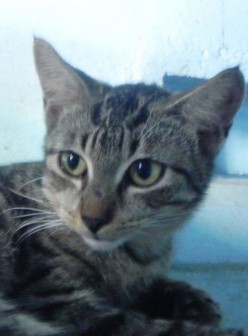Continued
Sprains and strains
Last week, I mentioned that lameness is a symptom, an expression of some deeper malady. Lameness could be due to injuries of the tendons, muscles (pulled muscles), bones (fractures), dislocated joints, degenerative/ congenital metabolic diseases and sprains. Let’s look at this latter category today.
A sprain is an injury to a joint, usually a leg joint. We must firstly understand that joints are usually encapsulated by special tissue and ligaments. If these tissues and ligaments are expanded (because of some sudden physical force) we have a condition of a sprain. Some sprains are worse than others, depending on the level of stretching of the tissue/ligaments. (In some real bad case scenarios, there can be even tearing involved.)

Usually, I do not advise the immediate taking of an X-ray. If the joint is really heavily swollen and the animal is not at all even trying to use the leg, then I might be tempted to request an X-ray picture. Mostly, the vet would palpate the area and gently rotate the joint before making the decision to X-ray. Actually, more often than not, the X-ray may be requested by the pet’s owner who is in a state of panic, at that point. It’s the vet’s job to explain the need (or not) for an X-ray.
The treatment should concentrate on immobility and rest for the injured leg. If there is a suspicion of torn ligaments, one would need to splint and strap the leg so as to constrain any leg movement. I usually recommend ice packs to help reduce the swelling. One can add crushed ice to a plastic bag and wrap the limb to hold the bag in place over the injured joint. One should apply the ice for 15 minutes every hour for the first 3-4 days.
One thing I must emphasize is the non-use of pain tablets. An owner, seeing his/her pet in pain, immediately thinks of giving the animal a painkiller. This is not right. If the pain subsides, the animal would be tempted to use the leg. In so doing, more damage could be created at the injured joint. That, you do not want.
Tendon injuries

A tendon may be stretched, partly torn, or completely ruptured. An irritated or inflamed tendon is called a tendonitis. Strained tendons sometimes follow sudden wrenching or twisting injuries to the limb. In some cases, tendonitis follows overuse of the limb (for example, after strenuous field or road work).
The sign of tendonitis are temporary lameness, pain or bearing weight, pain and swelling over the course of the tendon. The tendons of the forepaw (front and back) are affected most often.
Treatment
Total resting (immobility) of the limb is most important. It may be necessary to splint the joint as was discussed earlier. Activity which causes flare-ups should be reduced or stopped. Do not give drugs to relieve pain, because, as I have said earlier, if the dog does not feel pain, he may wish to use the leg – thus possibly aggravating the problem further.
Rupture of the Achilles (heel) tendon, which attaches to the hock joint, can be caused by sudden and extreme flexion. This is the tendon most often severed by dog fights and car accidents. It must be repaired surgically.
Muscle strain
An injured or torn muscle can be caused by: (a) sudden stretching of its fibres; (b) prolonged stress or over-exertion; and (c) a blow to the muscle. The symptoms are lameness, a knotting-up of the muscle which feels hard to the touch, and swelling with tenderness (exhibition of pain) over the injured part.
Treatment
Rest and cold packs are previously recommended earlier in this article. Visit your vet, who will decide on the most appropriate course of action relative to the specific condition.
Dislocated joint
A strong force is necessary to rupture a joint and displace the bones. Such injuries usually are associated with falls and car accidents. The signs are sudden onset of pain with inability to use the limb; there is an observable deformity (or shortening) of the leg when compared with the opposite side.
Treatment
Veterinary examination is necessary to rule out an associated fracture, and to replace the joint (preferably under anaesthesia) in its socket. These injuries frequently involve shock and internal bleeding; the vet has to counteract these developments.
Please implement disease preventative measures (vaccinations, routine dewormings, monthly anti-heartworm medication, etc) and adopt-a-pet from the GSPCA’s Animal Clinic and Shelter at Robb Street and Orange Walk, if you have the wherewithal to care well for the animals. Do not stray your unwanted pets, take them to the GSPCA’s Clinic and Shelter instead. If you do not wish your pet to have puppies or kittens, you may exploit the GSPCA’s free spay and neutering programme. If you see anyone being cruel to an animal, or if you need any technical information, please get in touch with the Clinic and Shelter by calling 226-4237.





